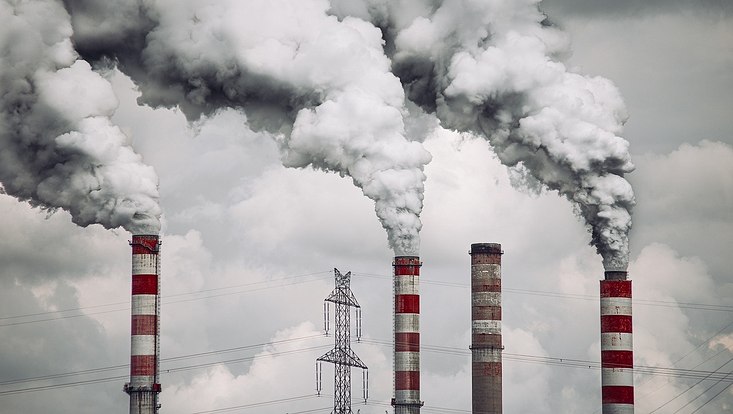How many greenhouse gases are emitted across the world?Carbon Dioxide Emissions Reach New Record High
6 December 2023, by LMU/ Newsroom editorial office

Photo: pixabay/jwvein
The new report by the Global Carbon Project shows that fossil CO2 emissions will reach a record high in 2023. If emissions remain that high, according to the calculations of an international research term in which Universität Hamburg is involved, the carbon budget for remaining within the 1.5°C limit will be used up in 7 years.
The time remaining to reach the climate goals of the Paris Climate Agreement is running out ever more rapidly. This can be seen in the annual report issued by the Global Carbon Project (GCP), a collaboration between international researchers, including Prof. Dr. Tatiana Ilyina and Dr. Hongmei Li from the Cluster of Excellence Climate, Climatic Change, and Society (CLICCS) at Universität Hamburg. According to this report, fossil CO2 emissions are expected to total 36.8 billion tons in 2023, reaching a new record level that is 1.1 percent higher than the 2022 figure.
Initial prognoses backed up by climate calculation models
Regionally, trends over recent years have been varied: while fossil-fuel emissions in India and China are increasing (plus 8.2 percent, plus 4 percent), they sank in Europe by 7.4 percent, in the USA by 3 percent, and by a total of 0.4 percent across the rest of the world. For Europe, the authors credited the reduction to the expansion of renewable energies, and the effects of the energy crisis. Increases in China are partially due to a delayed recovery from the effects of the COVID-19 lockdowns.
For 2023, the researchers estimate that half of the CO2 emitted will be absorbed by carbon sinks on land and in the oceans. The rest will end up in the atmosphere, where the CO2 content will rise to an annual average of around 419 ppm (parts per million).
This CO2 estimate was derived by a team working around Tatiana Ilyina and Hongmei Li from the Cluster of Excellence CLICCS, using earth systems models for the first time this year. It calculated the annual variations in atmospheric CO2 in light of the fluctuations in carbon sinks on land and in the oceans. This is extremely relevant for potential climate futures, as the models can be used to provide robust prognoses.
More than 120 participants world-wide
The annual report on the global carbon budget was created by an international team of more than 120 researchers, and presented on 5 December 2023 at a press conference as part of the twenty-eighth UN Climate Change Conference in Dubai.
From the German-speaking world, the group included researchers from Alfred-Wegener-Institut (Bremerhaven), ETH Zürich, GEOMAR Helmholtz Centre for Ocean Research (Kiel), International Institute for Applied Systems Analysis (IIASA), Karlsruhe Institute of Technology, Leibniz Institute for Baltic Sea Research (Warnemünde), Ludwig-Maximilian-Universität (Munich), Max Planck Institute for Meteorology (Hamburg), Max Planck Institute for Biochemistry (Jena), Potsdam Institute for Climate Impact Research, University of Bern, and Universität Hamburg. They contributed ocean monitoring data, model simulations for the oceans, land, and atmosphere, and analyses to the report.



